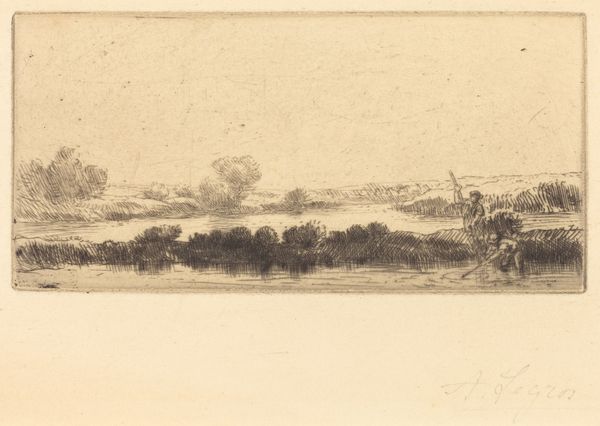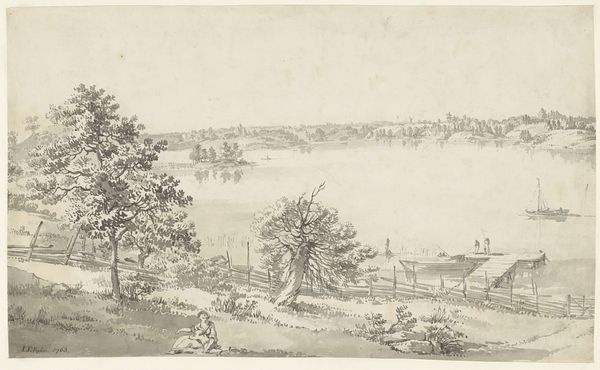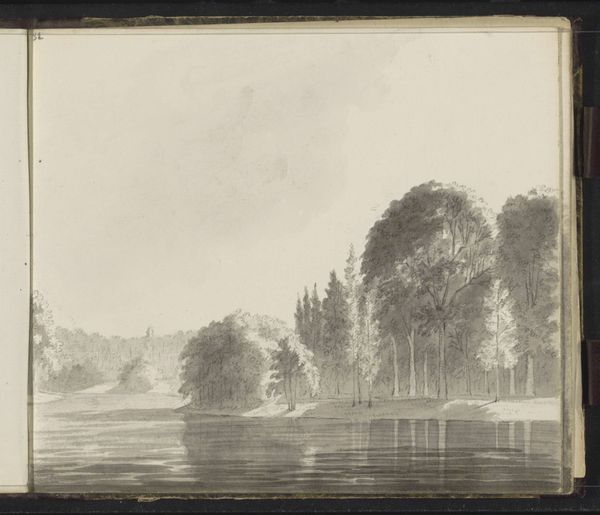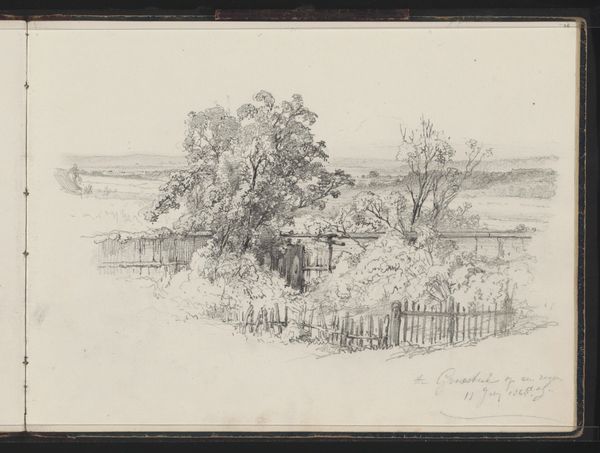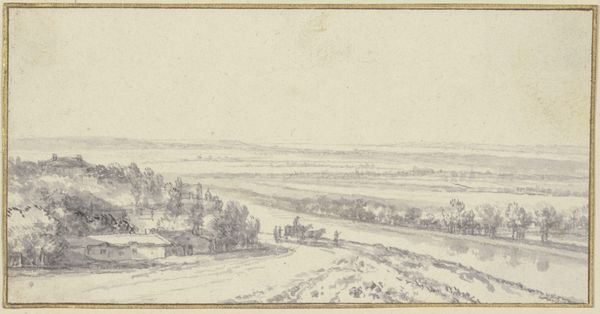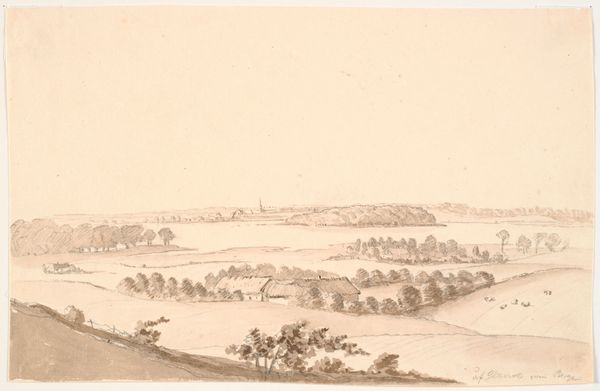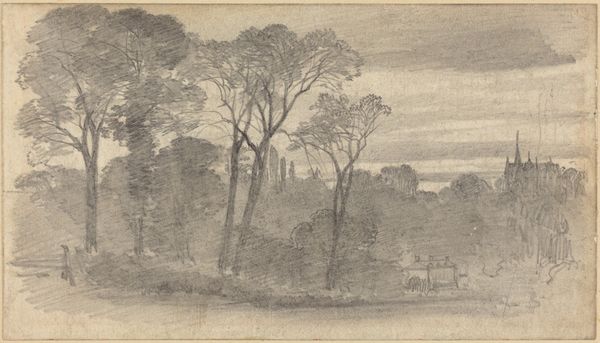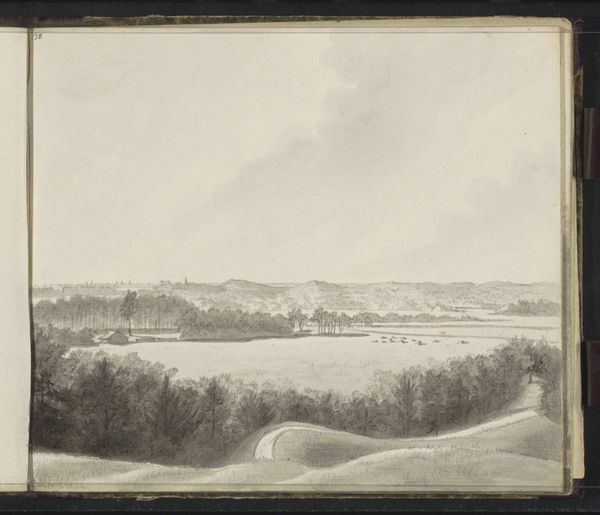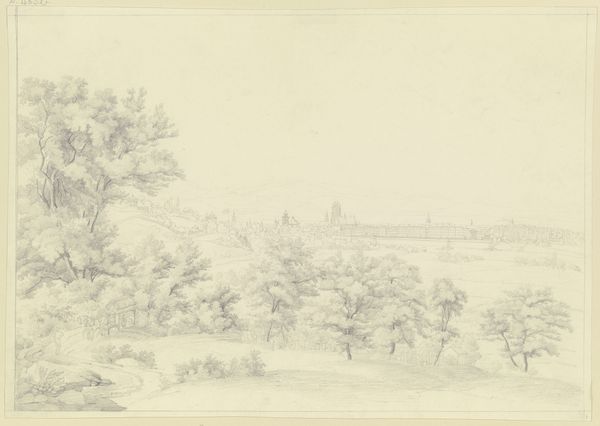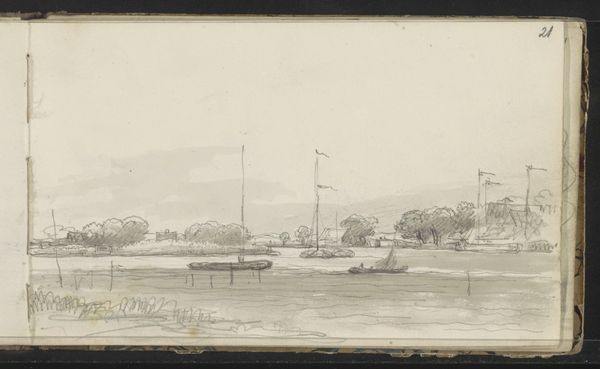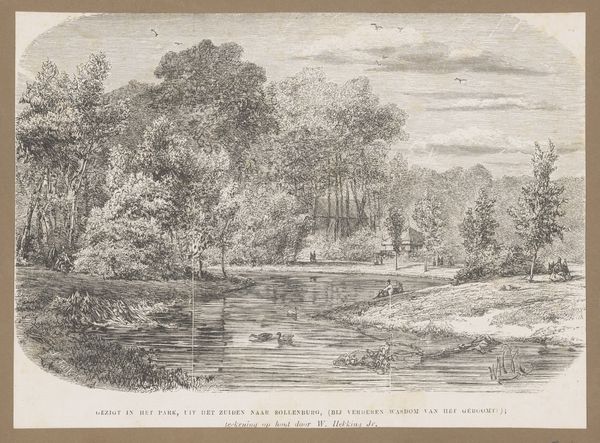
Charles River, Cambridge, Massachusetts (from Sketchbook of New England and Pennsylvania Landscape and Marine Subjects) 1886
0:00
0:00
Dimensions: 4 15/16 x 7 3/8 in. (12.5 x 18.7 cm)
Copyright: Public Domain
Editor: This is William Trost Richards' "Charles River, Cambridge, Massachusetts," a pencil drawing from 1886. I’m struck by the composition - the trees frame the cityscape, creating a sense of depth, but also a kind of… melancholy? What do you see in this piece, looking at it from a formal perspective? Curator: Immediately, I am drawn to the artist’s masterful manipulation of line and tone to articulate space. Consider how Richards employs delicate, almost ephemeral strokes in the background, gradually increasing the density and darkening the tonality as the eye moves forward, establishing the foreground with a profound sense of presence. Note especially the reflections in the water. What does the consistency of line-weight communicate to you? Editor: I guess the similar lines in both the objects and their reflections tie the two planes together and imply that it is more of a piece? Also, it seems that the lack of definition or the softness communicates more about how a viewer sees and comprehends reality rather than just merely sees something. Curator: Precisely. It’s also interesting to analyze the structural elements. The composition isn't a perfect mirror, the far skyline is punctuated with vertical marks while the immediate reflections in the river use shorter horizontal strokes. We should consider the distribution of light and dark and the subtle rhythmic patterns they create. What might these formal qualities suggest in terms of the artist's intentions, or perhaps his state of mind? Editor: So you're saying that the form becomes a tool not just to represent the subject, but also to suggest emotion or deeper meaning? I'll have to remember that as I continue in my study of art! Curator: Absolutely. And that is where formal analysis becomes not just a descriptive exercise, but an interpretive act, acknowledging the intersection between technique and meaning. The work moves past realism and towards greater impressionistic sentimentality because of his specific choices in mark-making.
Comments
No comments
Be the first to comment and join the conversation on the ultimate creative platform.

